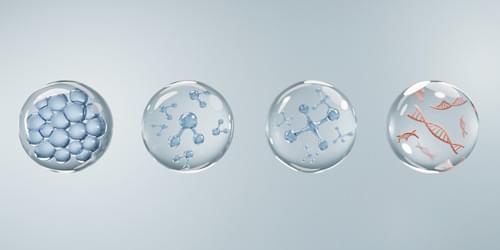In 1949 physicist Chien-Shiung Wu devised an experiment that documented evidence of entanglement. Her findings have been hidden in plain sight for more than 70 years.
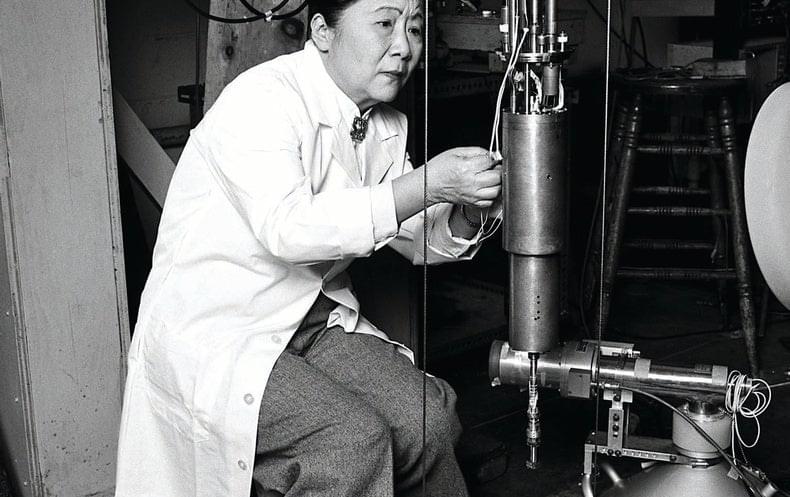

Recorded on February 10th, 2023.
Historian Stephen Kotkin became the Kleinheinz Senior Fellow at the Hoover Institution in 2022. He taught at Princeton for more than 30 years, and is the author of nine works of history, including the first two volumes of his biography of Joseph Stalin, Paradoxes of Power, 1,878 to 1928 and Waiting for Hitler, 1929 to 1941. He is now completing the third and final volume. Since the war in Ukraine broke out a year ago, Kotkin has appeared regularly on Uncommon Knowledge with Peter Robinson to offer his unique perspective on the Russian aggression and answer five questions for us. This is the third installment.
For further information:
https://www.hoover.org/publications/uncommon-knowledge.
Interested in exclusive Uncommon Knowledge content? Check out Uncommon Knowledge on social media!
Facebook: https://www.facebook.com/UncKnowledge/
Twitter: https://www.twitter.com/UncKnowledge/
Instagram: https://instagram.com/uncommon_knowledge_show
A system of robots that harvest and transport crops on their own without human assistance has been developed for use in agricultural facilities such as smart farms.
The research team under Choi Tae-yong, principal researcher at the AI Robot Research Division’s Department of Robotics and Mechatronics of the Korea Institute of Machinery and Materials, an institution under the jurisdiction of the Ministry of Science and ICT, has developed a multiple-robot system for harvesting crops.
This technology can be used to help at agricultural sites where there is a noticeable shortage of manpower by harvesting crops through an automated system. This system also includes robots that use autonomous driving technology to then transport the harvested crops to loading docks.
Verses Technologies Inc. (VERS) :
Gabriel Rene CEO
Chief Scientist CSO — Karl Friston.
Dan Mapes — Founder & President.
Capm Peterson — Chief Innovation Officer.
Scott Paterson Director.
VERSES Technologies Inc. (NEO: VERS) (OTCQX: VRSSF), a cognitive computing company specializing in the next generation of artificial intelligence, has announced a breakthrough in AI with the world’s first General Intelligent Agent, codenamed GIA™, (‘jee-yah’) designed to offer a new human-centered way for businesses and individuals to interact with technology.
Verses is a cognitive computing company specializing in next-generation artificial intelligence. Modelled after natural systems, and the design principles of the human brain and the human experience, Verses’ flagship offering, KOSM, is a network operating system for enhancing any application with adaptive intelligence. Built on open standards, KOSM transforms disparate data into a universal context that fosters trustworthy collaboration between humans, machines and AI, across digital and physical domains. Imagine a smarter world that elevates human potential through innovations inspired by nature.
https://www.verses.ai/
“Please subscribe to The Radius Research Channel if you like these videos and help bring more interviews with high quality companies and CEOs.
Register here to receive my weekly small-cap & venture cap newsletter with live webinar registration for CEO Q&A. — https://lp.constantcontactpages.com/su/KHhowOK"
(NEO: VERS)
Billionaires like Jeff Bezos, Peter Thiel, and Sam Altman want to live forever, here’s how they’re planning on doing it and what it could mean for society.
First ‘long form’ video I have made in awhile. Very excited to get back into it and play around with different ways of styles and editing. Excited to hear what you guys think!
Chapters.
0:00 Introduction.
0:35 The Epic of Gilgamesh.
1:23 The Anti-Aging Industry.
1:59 Billionaire Life Extension.
3:17 Digital Heaven.
3:40 The Immortal Animal.
4:25 Impacts on Society.
5:25 The Great Equalizer.
Gear I Use:
Tascam Microphone: https://amzn.to/3L4f2TM
Rode Go Microphone: https://amzn.to/3kQWmfr.
Greenscreen: https://amzn.to/3T3iNdV
Sony A7C: https://amzn.to/3kNl4gN
Sony 16-35mm: https://amzn.to/41QWoV4
SD Card: https://amzn.to/3ylwDPa.
Hard Drive: https://amzn.to/3mwY1Y2
Laptop: https://amzn.to/3mwYae2
Find Me Here.
TikTok: https://www.tiktok.com/@mulligan.tv.
Instagram: https://www.instagram.com/mulligan.tv.
Additional Footage from Storyblocks.
This video is about the very real threat that artificial intelligence can surpass human intelligence and very soon. ChatGPT and OpenAI have shown what can be achieved by scaling models up and GPT4 just showed multi-modality. How close are we to general intelligence (AGI) and how will that impact humanity?
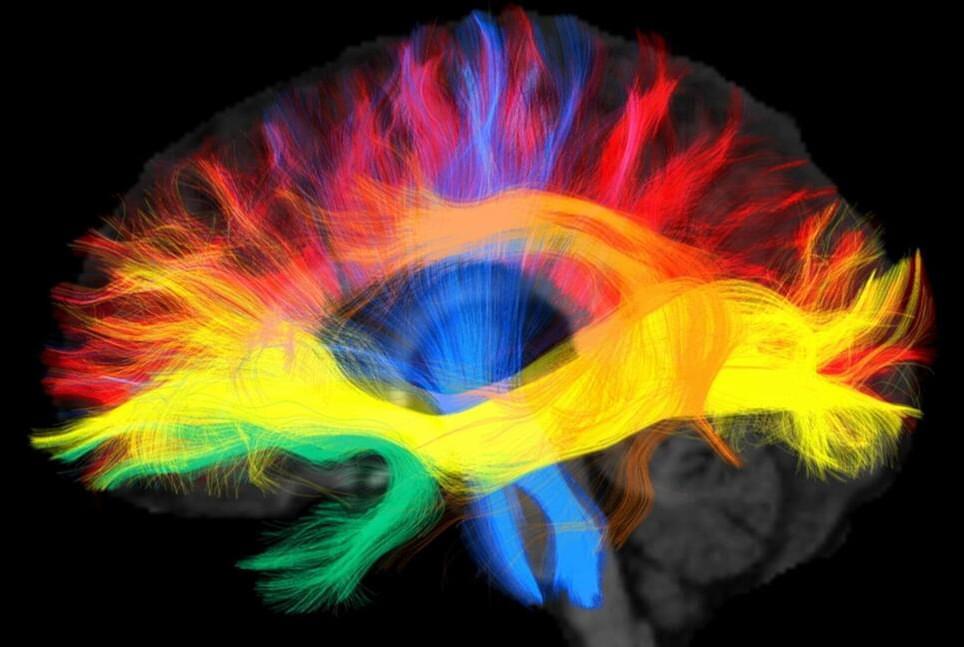
Scientists at the Max Planck Institute for Human Cognitive and Brain Sciences in Leipzig have found evidence that the language we speak shapes the connectivity in our brains that may underlie the way we think. With the help of magnetic resonance tomography, they looked deep into the brains of native German and Arabic speakers and discovered differences in the wiring of the language regions in the brain.
Xuehu Wei, who is a doctoral student in the research team around Alfred Anwander and Angela Friederici, compared the brain scans of 94 native speakers of two very different languages and showed that the language we grow up with modulates the wiring in the brain. Two groups of native speakers of German and Arabic respectively were scanned in a magnetic resonance imaging (MRI) machine.
The high-resolution images not only show the anatomy of the brain, but also allow to derive the connectivity between the brain areas using a technique called diffusion-weighted imaging. The data showed that the axonal white matter connections of the language network adapt to the processing demands and difficulties of the mother tongue.
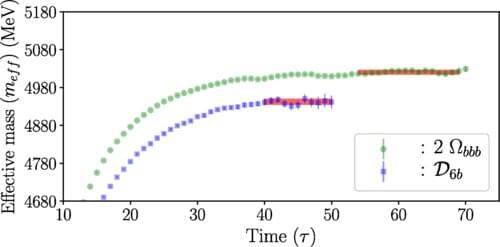
Dibaryons are the subatomic particles made of two baryons. Their formations through baryon-baryon interactions play a fundamental role in big-bang nucleosynthesis, in nuclear reactions including those within stellar environments, and provide a connection between nuclear physics, cosmology and astrophysics.
Interestingly, the strong force, which is the key to the existence of nuclei and provides most of their masses, allows formations of numerous other dibaryons with various combinations of quarks. However, we do not observe them abound—deuteron is the only known stable dibaryon.
To resolve this apparent dichotomy, it is essential to investigate dibaryons and baryon-baryon interactions at the fundamental level of strong interactions. In a recent publication in Physical Review Letters, physicists from the Tata Institute of Fundamental Research (TIFR) and The Institute of Mathematical Science (IMSc) have provided strong evidence for the existence of a deeply bound dibaryon, entirely built from bottom (beauty) quarks.
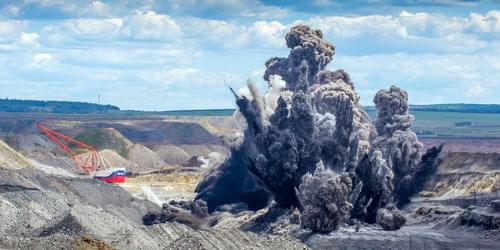
An explosive material fabricated with a highly porous structure is inactive but is easily “switched on” when filled with water.
Despite great effort, researchers have failed to find ways to make explosives entirely safe during storage yet still easily usable when needed. Now a research team has demonstrated an explosive with these properties by creating a highly porous structure for their explosive material [1]. The voids prevent the structure from supporting a sustained propagating wave of detonation, but filling the voids with water can quickly restore the explosive capacity. The researchers hope this technique can provide safer explosives for use in areas such as mining and oil exploration.
Storing highly explosive materials is inherently risky—in the military world, for example, over 500 accidental explosions occurred at munitions sites between 1979 and 2013, according to a survey [2]. These materials could be safer if they could be easily switched between an explosive-ready state and a “safe” state. “A switchable explosive is the holy grail of explosives research,” says chemist Alexander Mueller of the Los Alamos National Laboratory in New Mexico. He and his colleagues believe that they are the first to achieve it.
